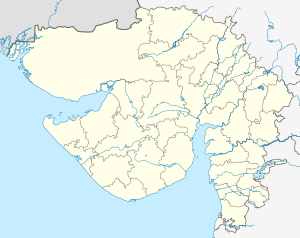The Muzaffarid dynasty, sometimes referred as Ahmedabad dynasty, were Sultans of Gujarat in western India from 1391 to 1583. The founder of the dynasty was Zafar Khan who was governor of Gujarat under the suzerainty of the Tughlaq dynasty of the Delhi Sultanate. When the Sultanate was weakened by the sacking of Delhi by Timur in 1398, and Zafar Khan took the opportunity to establish himself as sultan of an independent Gujarat. His son, Ahmed Shah I established the capital at Ahmedabad. The dynasty ruled for almost 200 years, until the conquest of Gujarat by the Mughal Empire in 1572. The sultanate reached its peak of expansion under Mahmud Begada, reaching east into Malwa and west to the Gulf of Kutch.

Indo-Islamic architecture is the architecture of the Indian subcontinent produced by and for Islamic patrons and purposes. Despite an initial Arab presence in Sindh, the development of Indo-Islamic architecture began in earnest with the establishment of Delhi as the capital of the Ghurid dynasty in 1193. Succeeding the Ghurids was the Delhi Sultanate, a series of Central Asian dynasties that consolidated much of North India, and later the Mughal Empire by the 15th century. Both of these dynasties introduced Islamic architecture and art styles from West Asia into the Indian subcontinent.
Radhanpur is a town and a municipality in Patan district in the Indian state of Gujarat.

Sarkhej Roza is a mosque and tomb complex located in the village of Makarba, 7 km south-west of Ahmedabad in Gujarat state, India.

Dariapur is an area located in Ahmedabad, India. Situated in Central Ahmedabad, Daripur is famous for housing some of the important tourist destinations in Ahmedabad. Among them are Qutab Shah Mosque and Rani Sipri's Mosque. Muhafizkhan's Mosque is another Muslim sanctum situated here. Dariyapur is a ward of Dariapur.
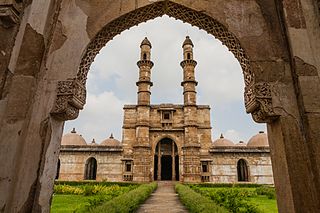
Jami Masjid in Champaner, Gujarat state, western India, is part of the Champaner-Pavagadh Archaeological Park, a UNESCO World Heritage Site, and is among the 114 monuments there which are listed by the Baroda Heritage Trust. It is located about 150 feet (46 m) east of the city walls (Jahdnpandh), near the east gate.
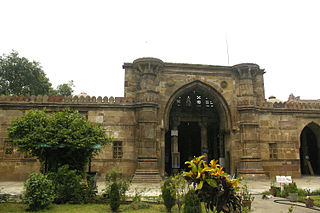
Ahmad Shah's Mosque, also known as Shahi Jam-e-Masjid or Juni Juma Masjid is the oldest mosque of Ahmedabad, India.

Haibat Khan's Mosque is a medieval mosque in Ahmedabad, India.

Saiyad Usman Mosque, alternatively spelled as Syed or Saiyyed, also known as Usmanpura Dargah or Roza or Saiyad Oosman Mausoleum, is a medieval tomb and mosque in Usmanpura, Ahmedabad, India.

Azam and Muazzam Khan's Tomb or Azam Khan and Muazzam Khan's Roza is a medieval brick tomb in Vasna, Ahmedabad, India.

Mir Abu Turab's Tomb, locally known as Qadam-e-Rasul ki Dargah is a medieval tomb in Behrampura, Ahmedabad, India.

Achut Bibi's Mosque and Tomb, also known as Shahi Masjid locally, is a medieval mosque and tomb complex on the bank of Sabarmati river in Dudheshwar, Ahmedabad, India.

Miya Khan Chishti's Mosque and Tomb is a medieval mosque and tomb complex on the bank of Sabarmati river in Shahibaug area of Ahmedabad, India.

Shah-e-Alam's Tomb and Mosque, also known as Rasulabad Dargah or Shah Alam no Rozo, is a medieval mosque and tomb complex (Roza) in Shah Alam area of Ahmedabad, India.

Rani Rupamati's Mosque, also known as Rani Rupavati's Mosque or Mirzapur Queen's Mosque, is a medieval mosque and tomb complex in Mirzapur area of Ahmedabad, India.

Baba Lului's Mosque, also known as Baba Lavlavie's Masjid, is a medieval mosque and tomb complex in Behrampura area of Ahmedabad, India.
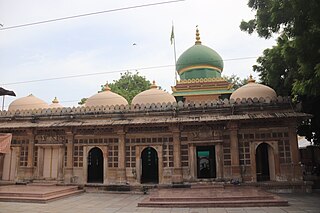
Wajihuddin's Tomb or Hazrat Wajihuddin Dargah, is a tomb of Sufi saint Wajihuddin Alvi in Khanpur area of Ahmedabad, India.
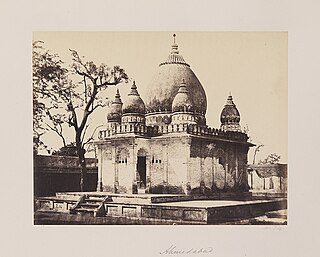
Sardar Khan's Roza or Nawab Sardar Khan's Mosque and Tomb, is a mosque and tomb complex in Jamalpur area of Ahmedabad, India.

Rani no Hajiro, also known as Mughalai Bibi's Tomb or Tombs of Ahmed Shah's Queens, is a tomb complex near Manek Chowk, Ahmedabad, India.

The tomb of Sikandar Shah, also known as Sikandar Shah Maqbara, is a mausoleum built by Gujarat Sultan Bahadur Shah in honour of his brothers and predecessors including Sikandar Shah in c. 1527 at Halol, Gujarat, India.



